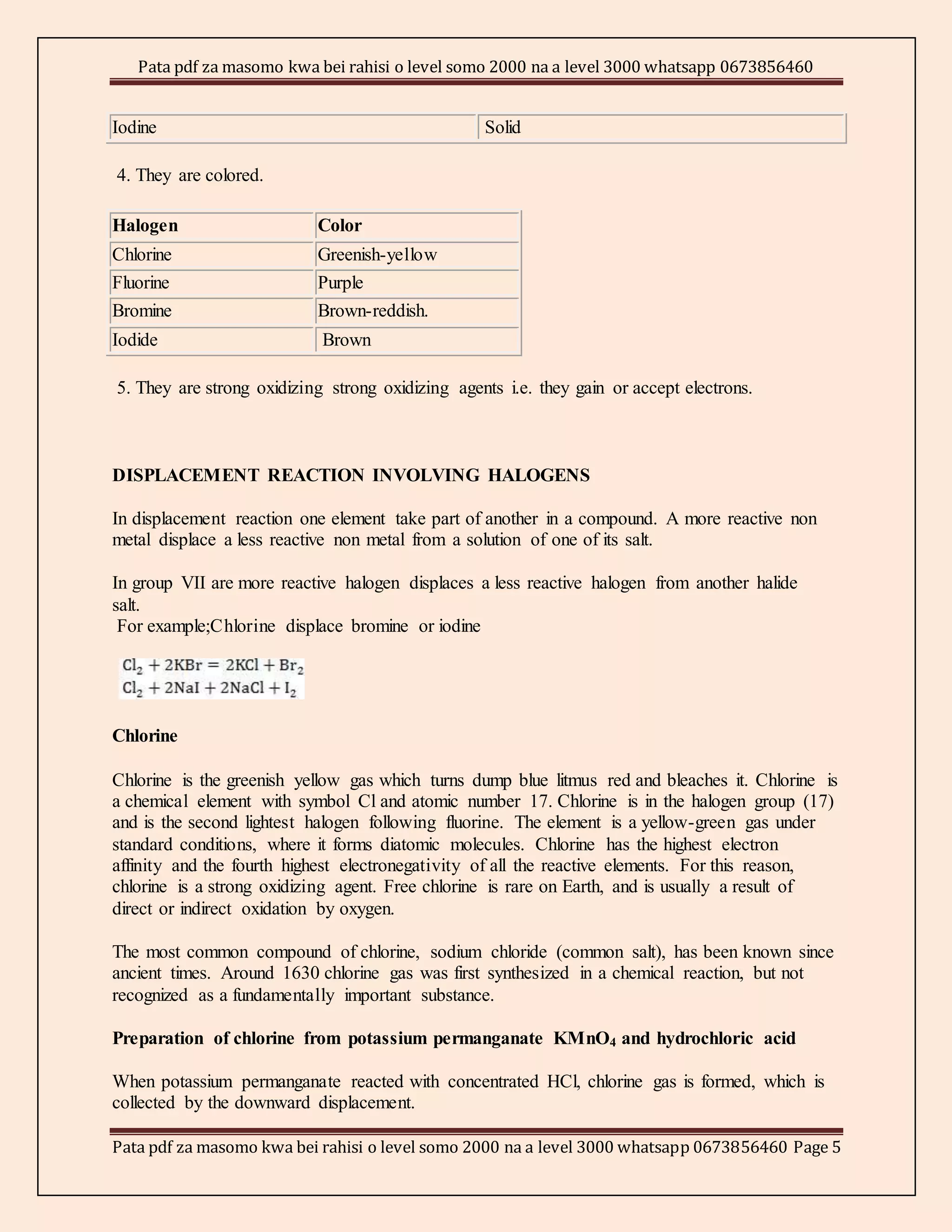The document provides an overview of non-metals, detailing their characteristics, chemical properties, and reactions with other substances. It highlights their role as oxidizing agents, their tendency to gain electrons, and various examples of non-metal oxides and their properties. Additionally, it covers specific non-metals like chlorine, their uses, and the preparation of related gases, along with their effects in various reactions and industrial applications.














![Pata pdf za masomo kwa bei rahisi o level somo 2000 na a level 3000 whatsapp 0673856460
Pata pdf za masomo kwa bei rahisi o level somo 2000 na a level 3000 whatsapp 0673856460 Page
15
Amorphous sulphur prepared from chemical compound
Amorphous sulphur is the sulphur allotrope of sulphur produced from the chemical reaction of
compounds containing sulphur.
Commercial uses of plastic sulphur
Used in the synthesis of plastic materials such as jars, trough, plastic water pipes, basin, pen-
tubes containing ink.
EXTRACTION OF SULPHUR BY FRASCH PROCESS
The Frasch process is a method to extract sulphur from underground deposits. It is the only
economic method of recovering sulphur from elemental deposits.[1] Most of the world's sulphur
was obtained in this way until the late 20thcentury, when sulphur was recovered from petroleum
and gas sources (recovered sulphur) became more commonplace (see Claus process).
In the Frasch process, superheated water is pumped into the sulphur deposit; the sulphur melts
and is extracted. The Frasch process is able to produce high purity sulphur.
As from 2011, the only operating Frasch mines worldwide are in Poland and since 2010 in
Mexico. The last mine operating in the United States was closed in 2000. A Frasch mine in Iraq
was closed in 2003 due to the U.S. invasion of Iraq.
Process
In the Frasch process, three concentric tubes are introduced into the sulphur deposit. Superheated
water (165 °C, 2.5-3 MPa) is injected into the deposit via the outermost tube. Sulphur (melting
point 115 °C) melts and flows into the middle tube. Water pressure alone is unable to force the
sulphur into the surface due to the molten sulphur's greater density, so hot air is introduced via
the innermost tube to froth the sulphur, making it less dense, and pushing it to the surface.](https://image.slidesharecdn.com/nonmetalsandtheircompounds-220128102021/75/Non-metals-and-their-compounds-15-2048.jpg)

















